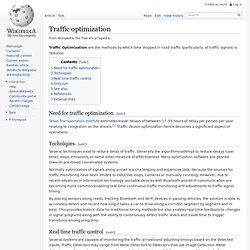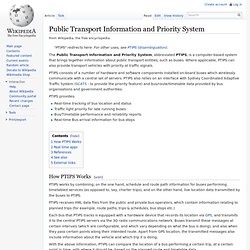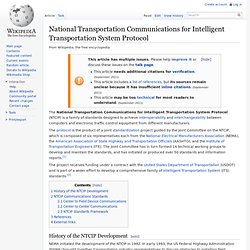

Industry insight: Insurance telematics. This special 'Industry insight' brings together TU’s comprehensive coverage of how insurance telematics is entering the mainstream.

Insurance telematics in Europe: The tipping point is near, part I Historically, the European insurance telematics market existed mainly in countries plagued with insurance fraud, car theft and high insurance costs. But experts say all that is about to change. In the first of a two-part series, Brendan McNally reports on what is expected to happen. Insurance telematics in Europe: The tipping point is near, part II Historically, the European insurance telematics market existed mainly in countries plagued with insurance fraud, car theft and high insurance costs.
But experts say all that is about to change. Insurance telematics makes its initial beachhead in Canada, part II Telematics promises to be a game changer in the Canadian auto insurance industry, but it’s early days and challenges abound. Insurance telematics business models: Beyond the discount. Иностранный опыт: Интеллектуальные транспортные системы — The Village — The Village — поток «Иностранный опыт»
К 2013 году в Москве должна появиться интеллектуальная транспортная система (ИТС).

За 210 миллионов долларов в ее пилотный проект должны войти единый диспетчерский центр, умные светофоры, уличные табло с информацией о пробках и объездных путях. ГЛОНАСС станет базовой навигационной системой. Мировые пионеры в индустрии ИТС — Корея, Сингапур и Япония, отдельные составляющие таких систем встречаются в Бостоне, Нью-Йорке, Лос-Анджелесе, Брисбене и Франкфурте. The Village проанализировал иностранный опыт и составил универсальный список обязательных элементов умной транспортной системы. В корейском Пусане центр управления транспортом оперирует терминалом автобусной информации. Единая карта оплаты проезда в Гонконге называется Octopus, в корейских городах Сеуле и Пусане — T-Money. В Сингапуре на зебрах зелёный свет включается нажатием кнопки. Систему автомобильной информации и связи (VICS) специалисты называют основой любой интеллектуальной транспортной системы. Иллюстрации: Антон Польский. Traffic optimization. Traffic Optimization are the methods by which time stopped in road traffic (particularly, at traffic signals) is reduced.

Need for traffic optimization[edit] Texas Transportation Institute estimates travel delays of between 17–55 hours of delay per person per year relating to congestion on the streets.[1] Traffic device optimization hence becomes a significant aspect of operations. Techniques[edit] Several techniques exist to reduce delay of traffic. Generally the algorithms attempt to reduce delays (user time), stops, emissions, or some other measure of effectiveness. Normally optimization of signals along a road is a challenging and expensive task, because the sources for traffic monitoring have been limited to inductive loops, cameras or manually counting. Traffic estimation and prediction system. Traffic estimation and prediction systems (TrEPS) have the potential to improve traffic conditions and reduce travel delays by facilitating better utilization of available capacity.

Public Transport Information and Priority System. The Public Transport Information and Priority System, abbreviated PTIPS, is a computer-based system that brings together information about public transport entities, such as buses.

Where applicable, PTIPS can also provide transport vehicles with priority at traffic signals. PTIPS consists of a number of hardware and software components installed on-board buses which wirelessly communicate with a central set of servers. PTIPS also relies on an interface with Sydney Coordinated Adaptive Traffic System (SCATS - to provide the priority feature) and bus/route/timetable data provided by bus organisations and government authorities. PTIPS provides: Real-time tracking of bus location and statusTraffic light priority for late running busesBus/Timetable performance and reliability reportsReal-time Bus arrival information for bus stops. Intelligent Transportation Systems Institute. The Intelligent Transportation Systems (ITS) Institute is a national University Transportation Center headquartered at the University of Minnesota.[1] The ITS Institute researches activities to enhance the safety and mobility of road-based and transit-based transportation, particularly in a northern climate and in rural environments.[2] The ITS Institute focuses on human-centered technology, such as computing, sensing, communications, and control systems.[3] History[edit] The ITS Institute was established under section 6024 of the Intermodal Surface Transportation Efficiency Act (ISTEA) of 1991.[4] It is currently funded through the federal Safe, Accountable, Flexible, Efficient Transportation Equity Act: A Legacy for Users (SAFETEA-LU) transportation bill.[5] Faculty and Staff[edit] Max Donath is the Director.

Intelligent transportation system. Intelligent transportation systems (ITS) are advanced applications which, without embodying intelligence as such, aim to provide innovative services relating to different modes of transport and traffic management and enable various users to be better informed and make safer, more coordinated, and 'smarter' use of transport networks.

Although ITS may refer to all modes of transport, EU Directive 2010/40/EU of 7 July 2010 on the framework for the deployment of intelligent transport systems in the field of road transport and for interfaces with other modes of transport defines ITS as systems in which information and communication technologies are applied in the field of road transport, including infrastructure, vehicles and users, and in traffic management and mobility management, as well as for interfaces with other modes of transport.[1] Background[edit] In the developing world, the migration from rural to urbanized habitats has progressed differently.
National Transportation Communications for Intelligent Transportation System Protocol. The National Transportation Communications for Intelligent Transportation System Protocol (NTCIP) is a family of standards designed to achieve interoperability and interchangeability between computers and electronic traffic control equipment from different manufacturers.

The protocol is the product of a joint standardization project guided by the Joint Committee on the NTCIP, which is composed of six representatives each from the National Electrical Manufacturers Association (NEMA), the American Association of State Highway and Transportation Officials (AASHTO), and the Institute of Transportation Engineers (ITE). The Joint Committee has in turn formed 14 technical working groups to develop and maintain the standards, and has initiated or produced over 50 standards and information reports.[1] History of the NTCIP Development[edit] NEMA initiated the development of the NTCIP in 1992.
NTCIP Communications Standards[edit] Center to Field Device Communications[edit] NTCIP Framework. Главная. Intelligent Transport Systems Australia. Sydney Coordinated Adaptive Traffic System. The Sydney Coordinated Adaptive Traffic System, abbreviated SCATS, is an intelligent transportation system developed in Sydney, Australia by former constituents of the Roads and Maritime Services in the 1970s, used in Melbourne since 1982,[1] Adelaide, South Australia since 1982 and Western Australia since 1983.[2] It is also used in New Zealand, Hong Kong, Shanghai, Guangzhou, Amman, Tehran, Dublin, Rzeszów, Gdynia and soon in part of Metro Atlanta,[3] among several other places.

The system may be referred to by an alternative name in a specific installation (except Sydney), although since deployment wider than Australia, New Zealand and Singapore, these localised names do not appear to be commonly used. The following are some local alternative names that have been or are in use: Minnesota Traffic Observatory - U of MN. 2Decide.